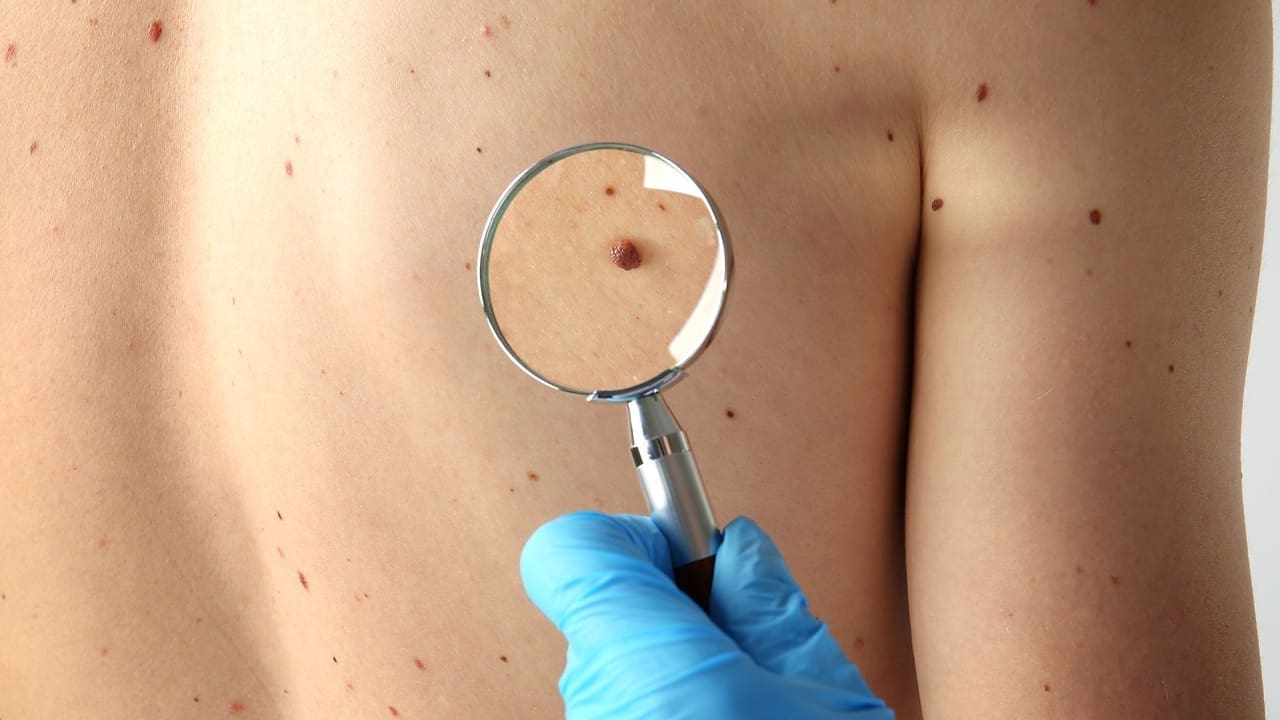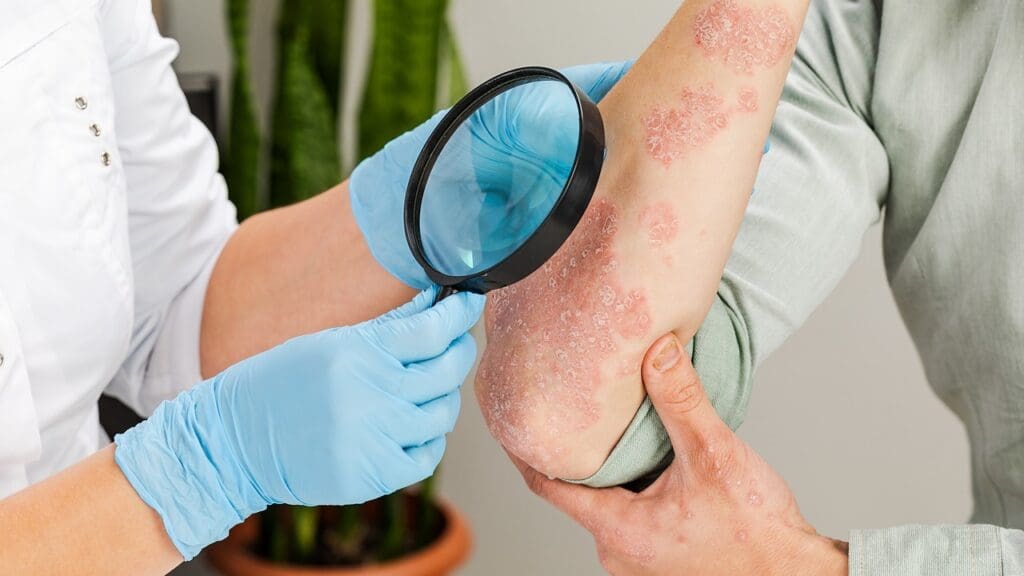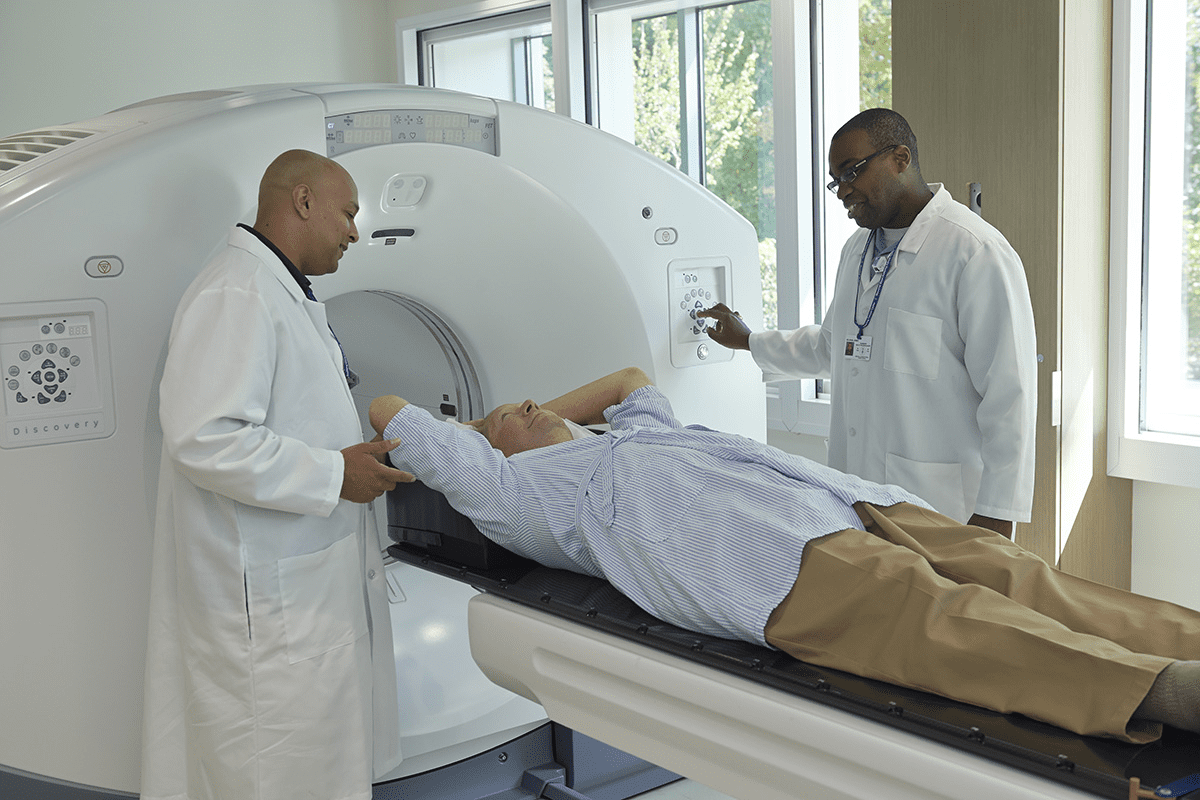Last Updated on November 27, 2025 by Bilal Hasdemir

Understanding melanoma survival rates is key for those facing a diagnosis. We aim to offer top-notch healthcare with full support.
Recent data shows a big jump in skin cancer recovery rates. The five-year survival rate for melanoma is now about 94%. This boost comes from new treatments and our focus on patient care.
At Liv Hospital, we’ve seen more cancer survivors over time. By January 1, 2008, there were 11.9 million cancer survivors.
Key Takeaways
- Melanoma survival rates have improved significantly.
- The overall five-year survival rate for melanoma is approximately 94%.
- Recent advancements in treatments have contributed to improved survival rates.
- Liv Hospital is committed to providing patient-centered care.
- The number of cancer survivors is steadily increasing.
Understanding Melanoma and Skin Cancer Basics
To understand melanoma survival rates, we must first know about skin cancer. It’s the most common cancer globally. It has several types, each with its own traits and how often it occurs.
Types of Skin Cancer and Their Prevalence
There are three main types of skin cancer: basal cell carcinoma (BCC), squamous cell carcinoma (SCC), and melanoma. BCC is the most common, making up about 80% of cases. SCC accounts for around 20%. Melanoma, though less common, is the most dangerous because it can spread quickly.
- Basal Cell Carcinoma (BCC): The most common type, often appearing on sun-exposed areas.
- Squamous Cell Carcinoma (SCC): More aggressive than BCC, with a higher risk of spreading.
- Melanoma: The most dangerous form, arising from melanocytes.
What Makes Melanoma Different from Other Skin Cancers
Melanoma comes from melanocytes, the cells that give skin its color. It can spread quickly, making it different from other skin cancers. Catching it early is key to improving the melanoma survival rate.
Risk Factors for Developing Melanoma
Several factors increase the risk of getting melanoma, including:
- Fair skin and light hair
- History of sunburns, specially during childhood
- Family history of melanoma
- Presence of multiple nevi (moles)
Knowing these risk factors and the basics of melanoma is key. It helps us see why early detection and treatment are so important. These actions greatly improve the survival rate for melanoma and overall cure rates for skin cancer.
Current Skin Cancer Recovery Rate Statistics
Recent data shows a big jump in melanoma survival rates. The five-year survival rate is now about 94%. This improvement comes from better treatments and more awareness about preventing skin cancer.
Overall Melanoma Five-Year Survival Rate of 94%
The five-year survival rate for melanoma patients has jumped to 94%. The SEER database shows this is a positive trend. It shows we’re getting better at catching and treating melanoma early.
Several factors have helped raise this survival rate. These include:
- Early detection through regular skin checks
- Advancements in surgical techniques
- Targeted therapies and immunotherapies
Historical Trends in Melanoma Recovery
In the past few decades, melanoma survival rates have greatly improved. Better technology and more awareness have played big roles. The five-year survival rate for melanoma has gone up a lot, showing we’re getting better at diagnosing and treating it.
Comparing Melanoma to Other Cancer Survival Rates
When we look at survival rates for different cancers, melanoma stands out. It has a high five-year survival rate thanks to new treatments. But we need to keep watching melanoma mortality rates and skin cancer death rates to see how these new treatments are working.
A study compared survival rates for different cancers. It found melanoma has a high survival rate compared to some common cancers. This info is important for patients and doctors to know the chances of recovery and make the best treatment plans.
“The progress made in melanoma treatment is a testament to the power of medical research and innovation. As we continue to advance our understanding of this disease, we are optimistic about improving survival rates further.”
By keeping an eye on survival stats, we can learn more about what helps melanoma patients recover. This knowledge helps us work towards even better outcomes for patients.
Survival Rates by Melanoma Stage
The stage at diagnosis is key in understanding melanoma survival rates. It’s vital for both patients and healthcare providers to know these rates. This knowledge helps in making informed decisions about treatment and care.
Localized Melanoma: Over 99% Five-Year Survival
Diagnosing melanoma early is critical. When it’s caught early, the five-year survival rate is over 99%. Early-stage melanoma is more treatable, leading to a better prognosis for patients.
Regional Spread: Approximately 75% Five-Year Survival
If melanoma spreads to nearby lymph nodes or tissues, the survival rate is about 75%. Though lower than early-stage melanoma, it’s a relatively good prognosis with the right treatment.
Metastatic Melanoma: 35% Five-Year Survival
Diagnosing melanoma in distant parts of the body, or metastatic melanoma, lowers the survival rate to around 35%. This stage is harder to treat. Yet, new medical therapies have improved outcomes.
The Dramatic Improvement from 15% to 35% in the Mid-2000s
There’s been a big jump in survival rates for metastatic melanoma, from 15% to 35% in the mid-2000s. This boost is thanks to targeted therapies and immunotherapy. These treatments have become more effective and accessible.
To show the changes in survival rates, here’s a table:
| Melanoma Stage | Five-Year Survival Rate |
|---|---|
| Localized | Over 99% |
| Regional Spread | Approximately 75% |
| Metastatic | Around 35% |
These numbers show why early detection is so important. They also highlight the progress in treating melanoma, even in advanced stages.
Melanoma Mortality Rate Projections for 2025
As we near 2025, the number of melanoma deaths in the U.S. is expected to rise. The SEER database gives us important insights into these trends. It helps us understand what’s happening with melanoma mortality rates.
Predicted 8,430 Deaths in the United States
By 2025, there could be 8,430 deaths from melanoma in the U.S. This number shows how big a challenge melanoma remains. We need to keep working on early detection and effective treatments to fight this disease.
Gender Disparities: Higher Burden Among Men
Studies show men are more likely to die from melanoma than women. This highlights the need for special efforts and awareness campaigns for men. We must address the unique risks and needs of men to reduce these disparities.
Regional Variations in Mortality Rates
Melanoma death rates vary across the U.S. Skin type, UV exposure, and healthcare access play a role. Knowing these differences helps us create better public health plans.
Looking at these projections and trends helps us prepare for the future. We should aim to improve early detection, treatment options, and awareness about melanoma. This way, we can work towards lowering the melanoma mortality rate.
Key Factors Affecting Skin Cancer Survival Outcomes
To improve skin cancer survival, we need to know what affects it. Skin cancer life expectancy and life expectancy with melanoma depend on many things.
The Critical Importance of Early Detection
Early detection is key to better skin cancer survival rates. Catching melanoma early means treatments work better. This leads to better results.
Tumor Characteristics and Their Impact on Prognosis
Tumor traits like thickness and how fast cells divide are important. Thicker tumors or fast-growing cells mean a worse outlook. Knowing these traits helps doctors plan better treatments.
“The thickness of the melanoma is one of the most important prognostic factors.”
Patient-Related Factors Influencing Recovery
Things like age and health also affect recovery. Younger people usually do better than older ones. Some genetic conditions might need stronger treatments.
| Factor | Impact on Survival |
|---|---|
| Early Detection | Significantly improves survival rates |
| Tumor Thickness | Thicker tumors have poorer prognosis |
| Patient Age | Younger patients have better survival rates |
Knowing these factors helps us improve skin cancer survival rates. It also makes patient care better.
Revolutionary Treatments Improving Melanoma Survival
The way we treat melanoma has changed a lot with new therapies. These new treatments have made it easier for people to survive melanoma, giving them hope, even when the disease is advanced.
Targeted Therapies: BRAF and MEK Inhibitors
Targeted therapies are key in fighting melanoma. BRAF and MEK inhibitors are at the forefront. They target specific genetic changes that cause melanoma to grow. This helps slow down or stop the disease.
Research shows that using BRAF and MEK inhibitors together can help patients live longer. This treatment is now a common choice for many.
Immunotherapy Breakthroughs: Checkpoint Inhibitors
Immunotherapy has changed how we treat melanoma. It uses the body’s immune system to fight cancer. Checkpoint inhibitors are a big part of this, helping the immune system attack cancer cells better.
Drugs like pembrolizumab and nivolumab have greatly improved survival rates for melanoma patients. They are now a mainstay in treating advanced melanoma.
Combination Approaches for Advanced Disease
For advanced melanoma, combining treatments works well. Mixing targeted therapies with immunotherapies has shown better results than using one alone. This approach has improved survival rates and response rates.
How Modern Treatments Have Transformed Metastatic Melanoma Outcomes
Modern treatments have greatly changed the outlook for metastatic melanoma. The 5-year survival rate has seen a big jump thanks to these new therapies.
| Treatment Approach | Impact on 5-Year Survival Rate |
|---|---|
| Targeted Therapies (BRAF/MEK inhibitors) | Improved response rates and overall survival |
| Immunotherapy (Checkpoint Inhibitors) | Significant improvements in overall survival |
| Combination Therapies | Enhanced response rates and overall survival |
These new treatments have not only raised survival rates but also improved life quality for many. As research keeps moving forward, we can look forward to even better treatments for melanoma.
Life Expectancy with Melanoma: What Patients Should Know
Life expectancy with melanoma changes a lot based on when it’s found and how it’s treated. Getting a melanoma diagnosis can feel scary. But knowing about survival rates can help a lot.
Early-Stage Melanoma and Long-Term Outlook
For those with early-stage melanoma, the outlook is good. The five-year survival rate for melanoma is now about 94%. If caught early, the survival rate jumps to over 99%. This shows how key early detection is.
Advanced Melanoma: Modern Treatment Impact on Survival
For advanced melanoma, new treatments are making a big difference. Targeted and immunotherapies have changed how we treat it. These advances have raised the survival rate for skin cancer patients.
| Melanoma Stage | Five-Year Survival Rate |
|---|---|
| Localized | Over 99% |
| Regional Spread | Approximately 75% |
| Metastatic | 35% |
Quality of Life Considerations During and After Treatment
Survival rates are important, but so is quality of life during and after treatment. We focus on care that improves both health and well-being. This includes managing side effects and supporting mental health.
Knowing about skin cancer survival rates helps patients make better choices. As we keep improving melanoma treatment, we’re dedicated to top-notch care for our patients.
Disparities in Skin Cancer Outcomes
Despite progress in treating melanoma, big gaps in skin cancer results exist among different groups. These gaps show how biology, environment, and social status affect melanoma cancer prognosis and survival rate of melanoma.
Racial and Ethnic Differences in Survival
Studies reveal racial and ethnic gaps in melanoma survival. People with darker skin often get diagnosed later, leading to worse results. It’s key to develop specific plans to boost melanoma survival rates for all.
Age-Related Variations in Recovery Rates
Age also greatly influences melanoma recovery. Older folks are often diagnosed later and may have other health issues. We must adapt our treatments to meet the needs of older patients and ensure they get the best care.
Socioeconomic Factors Affecting Treatment Access and Outcomes
Socioeconomic status, like income and education, also plays a big role. Those with less money or education may struggle to get the right care, impacting their melanoma cancer prognosis. We need to make healthcare more accessible and support patients throughout their treatment.
Prevention and Management Strategies for Improved Outcomes
Effective prevention and management strategies are key to better skin cancer outcomes. By taking a complete approach, we can lower the number of cases and boost survival rates.
Skin Cancer Prevention Best Practices
Preventing skin cancer means making lifestyle changes and using protective measures. Stay out of the sun during peak hours and use sunscreen with high SPF. Wearing hats and sunglasses also helps a lot.
The Importance of Multidisciplinary Cancer Management
A team of specialists working together is vital in cancer management. This ensures patients get the best care, using the latest treatments.
Follow-up Care and Monitoring for Melanoma Survivors
Regular check-ups are key for melanoma survivors. They help catch any signs of cancer coming back and manage treatment side effects. We stress the need for ongoing care to improve long-term results.
By using these strategies, we can boost the skin cancer cure rate and improve patient quality of life. Knowing what are the survival rates of skin cancer helps us tailor care for each patient, leading to better results.
Conclusion: The Future of Melanoma Treatment and Recovery
The fight against melanoma is getting stronger every day. We’re seeing big steps forward in treating and beating this disease. Knowing the basics, spotting risks early, and acting fast are key to winning this battle.
Good news is coming in from the skin cancer recovery front. The five-year survival rate for melanoma patients is now 94%. Thanks to the SEER database, we’re learning more about cancer trends. This helps us find new ways to help patients.
Now, we need to make sure everyone gets the care they need. We must work on making treatment fair for all. By focusing on prevention, early detection, and effective treatments, we can keep improving survival rates. The future looks bright, with a focus on treating each patient as an individual.
FAQ
What is the overall five-year survival rate for melanoma?
The five-year survival rate for melanoma is about 94%. This shows a big improvement in recovery chances.
How do melanoma survival rates compare to other cancers?
Melanoma survival rates are getting better. They are now at 94% for five years. This shows big progress in treatment.
What are the survival rates for different stages of melanoma?
Survival rates change with the stage. For melanoma that’s just in one place, it’s over 99% for five years. For regional spread, it’s about 75%. And for the most advanced stage, it’s 35%.
What factors affect skin cancer survival outcomes?
Early detection, the type of tumor, and the patient’s health are key. These factors help improve survival chances and life expectancy.
What are the predicted melanoma mortality rates for 2025?
By 2025, there will likely be 8,430 deaths from melanoma in the U.S. Men are more likely to die, and there are regional differences in death rates.
How have modern treatments improved melanoma survival?
New treatments like targeted therapies and immunotherapy have greatly helped melanoma patients. They’ve made a big difference, even for those with the most advanced disease.
What is the life expectancy for patients with early-stage melanoma?
People with early-stage melanoma usually have a good outlook. They have high survival rates. This shows how important early detection is.
How do racial and ethnic differences impact skin cancer survival?
Racial and ethnic differences lead to survival rate gaps. This highlights the need to fix healthcare access and outcome issues.
What are the best practices for skin cancer prevention?
To prevent skin cancer, protect your skin from UV rays. Do regular self-exams and get professional skin checks.
Why is multidisciplinary cancer management important?
Team-based cancer care is key. It ensures patients get the best treatment plans for their needs.
What is the significance of follow-up care for melanoma survivors?
Follow-up care is vital. It helps watch for cancer coming back, manage side effects, and keep overall health good.
What is the cure rate for skin cancer?
The cure rate for skin cancer depends on the type and stage. But catching it early greatly increases the chance of a cure.
How does socioeconomic status affect treatment access and outcomes for skin cancer?
Socioeconomic status can affect getting timely and right treatment. This can change survival rates and outcomes for skin cancer patients.
References
- SEER Cancer Statistics: https://seer.cancer.gov/statfacts/html/melan.html
- AIM at Melanoma Foundation: https://www.aimatmelanoma.org/facts-statistics/
- Ezra: https://ezra.com/blog/may-melanoma-skin-cancer-awareness-month
- Cure Melanoma (Melanoma Research Foundation): https://www.curemelanoma.org/blog/over-104-000-americans-estimated-to-be-diagnosed-with-invasive-melanoma-in-2025
- The Skin Cancer Foundation: https://www.skincancer.org/skin-cancer-information/skin-cancer-facts/








